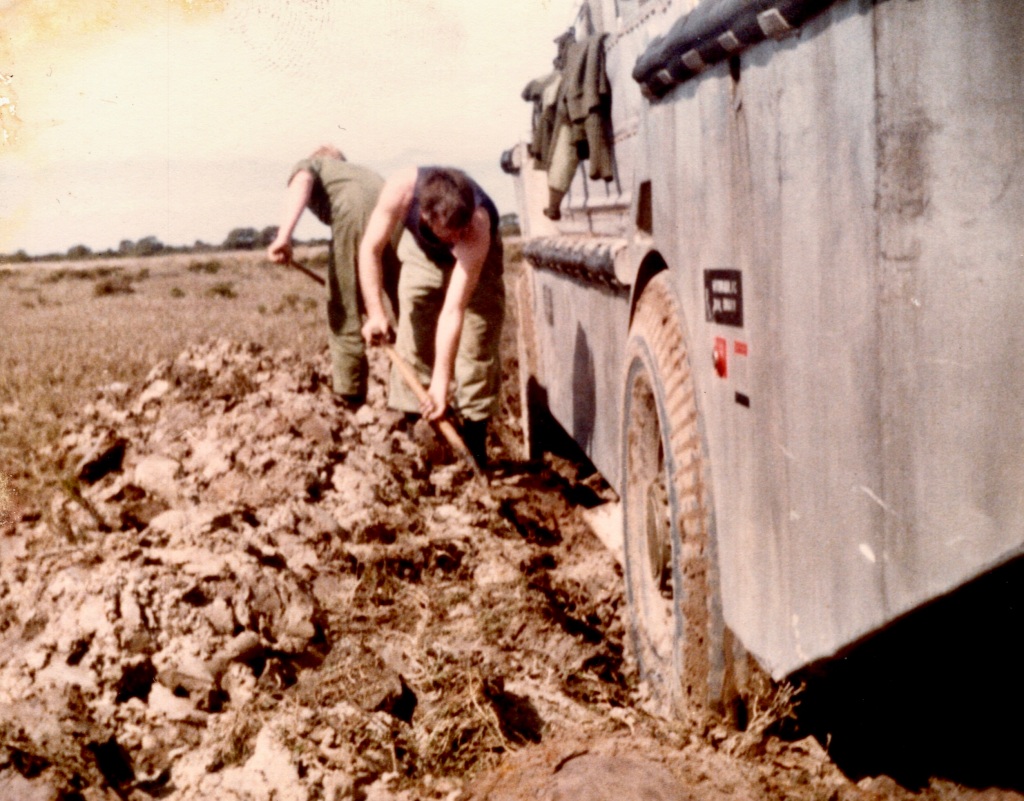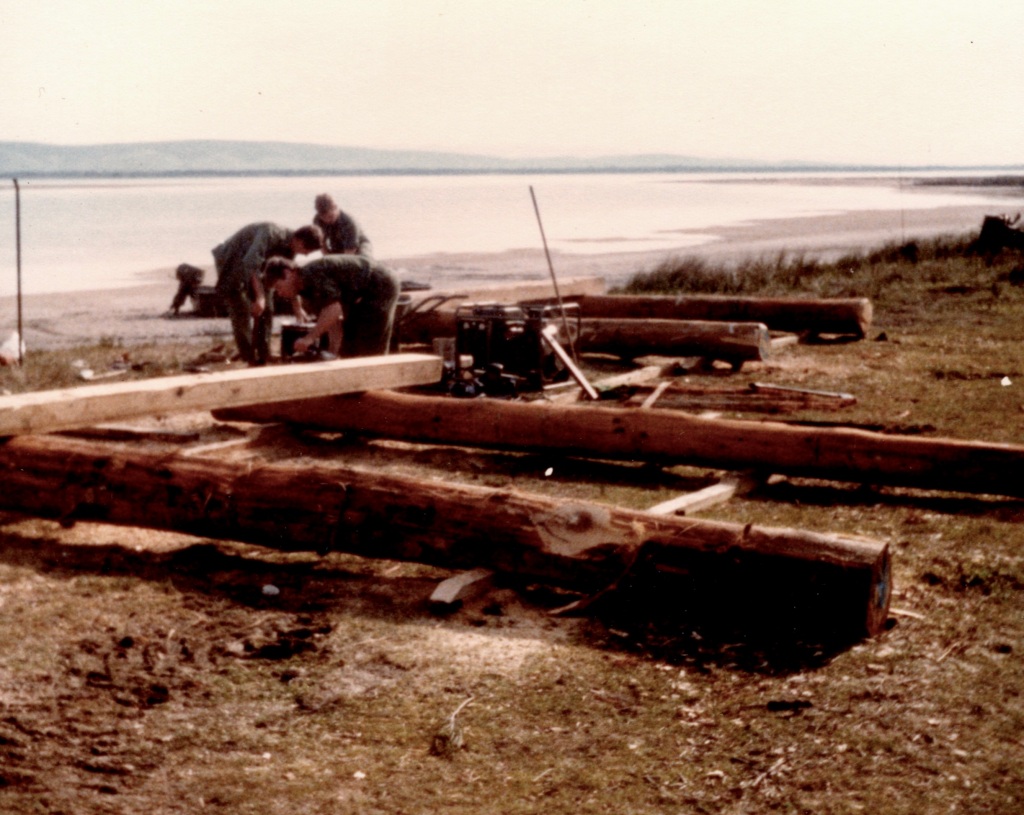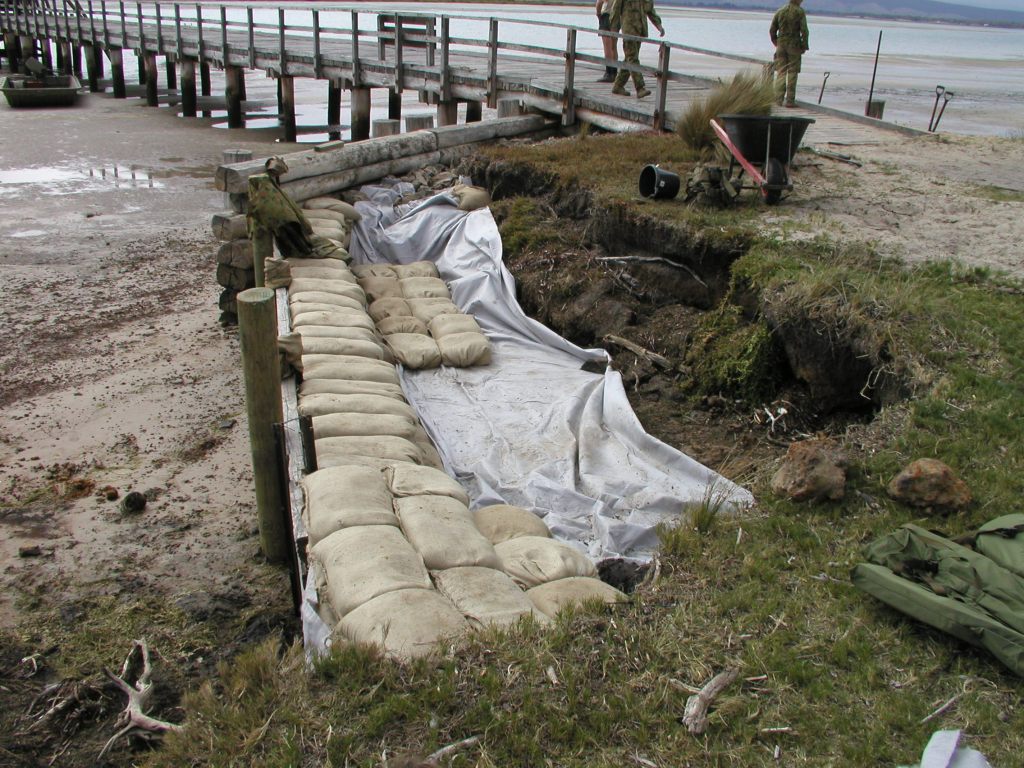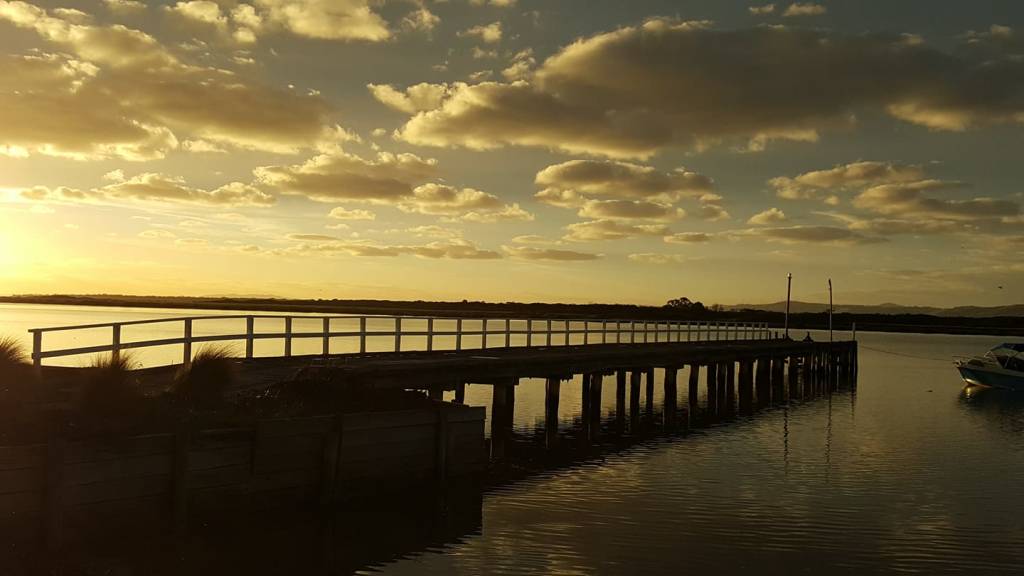Snake Island is Victoria’s largest sand island and is named after its elongated serpent shape, rather than the many slithering danger noodles that often lurk in the thick t-tree scrub. The place also abounds with introduced hog deer, migratory birds, koalas and gazillions of pesky mozzies.
The uninhabited island is situated within Corner Inlet in the shadow of the Prom, while Port Welshpool has the closest boat launch.
For over 100 years local farmers had been driving cattle across the shallows at low tide to graze on the island.
With a tidal range of two metres the remote island was badly in need of a jetty. The only suitable spot being the Swashway, a shallow channel between Snake and neighbouring Little Snake Island where the cattle once crossed between the two.
The idea of building a timber jetty had its genesis during a work visit with Fisheries and Wildlife staff to the Island in the late 1970s by then Major Rob Youl, Commanding Officer of the Army Reserve’s 91 Forestry Squadron (The Woodpeckers).
The local cattlemen and deer hunters were very generous with their support and advice on the jetty proposal.
After some frustrating years of discussion, planning, design, dealing with bureaucracy, getting approvals, as well as garnering support from the Forests Commission Victoria (FCV) as their main sponsor to supply the logs, the Woodpeckers embarked on an ambitious project to build a new timber jetty at the Swashway on Snake Island.
Initial designs were rejected by the Ports and Harbours engineers as not being robust enough. In hindsight, this insistence proved to be justifiably wise given the hostile coastal environment.
But the new strengthened design for the 53 m long jetty required larger logs and heavier equipment causing a last-minute organising rush from the Royal Australian Engineers (RAE) cadre staff.
Eventually, all the “ducks lined up” and the project was set for September 1982 as part of the Woodpecker’s annual bivouac.
Firstly, a small portable forestmil, manufactured by MacQuarrie Boundy, was established by the Woodpeckers in the nearby State forest at Alberton West and the highly durable yellow stringybark (Eucalyptus muelleriana) logs were felled and sawn.
But it quickly became apparent that the Army’s sawmill was seriously underpowered and struggled with the larger log sizes, so hasty arrangements were made with a local Yarram sawmiller for the sappers to finish the job in time.
Some larger 9m logs and other sawn timbers were also delivered to the nearby Bulga National Park for the 39 Electrical and Mechanical Squadron from Yallourn to replace the Corrigan Suspension Bridge a few months later.
Two large LCM-8 landing craft, operated by the 35 Water Transport Unit from Sydney, were delayed after they made a perilous journey along the wild and rugged coastline to Port Albert and needed to shelter from heavy gales at both Eden and Lakes Entrance.
The Ports and Harbours depot at Port Welshpool was chosen as a marshalling yard, with another base camp on Snake Island, which added to the many logistical challenges.
The LCM-8s, which could carry up to 60 tonnes, transported a bulldozer and forklift and landed them across the island’s gooey mudflats at high tide with the aid of beach mats constructed by the sappers.
The bulldozer then cleared the site for the jetty and cut a new 800 m access track, as well as sinking some fire dams.
Four smaller LARC-V amphibious landing craft, or Army Ducks, from the Melbourne Water Transport Division were also used, but they were prone to getting bogged in the mud and soft sand.
Smooth scheduling of the deliveries of logs and sawn timber from the State forest at Alberton West to Port Welshpool, and then to Snake Island in the heavy landing craft to match the tides, was crucial to the project’s success.
The challenge of driving piles into the coastal mud without heavy equipment was ingeniously solved by the sappers using long galvanised metal probes connected to a boat mounted pump. The nozzles on the end of the probes washed high pressure water under the ends of the piles which then sank about 3 meters under their own weight. With a Bailey Bridge jack and dumpy level to make some final adjustments, and following a few tide changes, the timber piers settled perfectly square and rock-solid.
Decking and handrails were also sawn in the bush and added to the structure. Timber abutments to protect the jetty from the relentless waves and tide were essential in the overall design.
The wet and windy weather wasn’t altogether kind, but the jetty was completed in only 9 days with a crew of 30 Woodpeckers.
Many visitors came to the site including some WW2 forestry veterans who confirmed that things were just as they remembered, as well as the new Minister for Conservation, Evan Walker, with the local media in tow.
A year later the bolts were tightened because the timber had shrunk a bit as it dried. Then in 2004, the Woodpeckers returned to install some replacement timber and sandbag the abutments to protect the structure from the elements.
The Woodpeckers confronted some significant technical and logistical difficulties to build the Swashway jetty. It also required the combined efforts of about 160 regular and reservist soldiers from other Army Corps and Units.
When they now gather for a cold frothy or two, the old Sappers from the 91 Forestry Squadron often reminisce about this rewarding and worthwhile achievement with well-deserved pride.
Some decking is now due for replacement by Parks Victoria, but the Swashway Jetty still stands after 41 years as an enduring testament to the Woodpecker’s incredible ability to simply Get Stuff Done (GSD).
But, best-of-all, the bush where yellow stringybark logs were selectively harvested from State forest at Alberton West is now a stand of thriving regrowth and well on its way to growing the timber needed for a replacement Swashway Jetty when the time comes.
Source: Rob Youl (1995). Swan Street Sappers.
Photos used with permission from the RAE Association: https://raevictoria.com/
























https://nla.gov.au/nla.obj-326212859

Fantastic article! Not many people know anything about the traditions of cattle crossing to snake island and here’s the construction story as well!
Three cheers to you!!!
LikeLiked by 1 person
Thanks, Peter!
What a good read!
Rob
>
LikeLiked by 1 person
OMG. The best one yet! I love these. Thank you so very much. I wish I was born about 30 years earlier (and probably as a bloke?). Regards Fiona (the forester) Pfeil
Sent from Mailhttps://go.microsoft.com/fwlink/?LinkId=550986 for Windows
LikeLiked by 1 person
Thanks. I was in the Army reserve in the early 1980s and switched over to the woodpeckers but missed this project. It wasn’t really a place for ladies its true. The main point I wanted to make in this story was about the renewable nature of forests. I visited this stand in the mid 1990s as Gippsland Senior Forester when it was being thinned and coppiced by the prisoners from Won Wron. It’s gunna produce great sawlogs again one day. But I fear for the future of forestry under the current regime. And I didn’t come away from the recent DECCA forest planning sessions feeling confident either. Cheers
LikeLike
My name is Robert Elder and myself and another gentleman by the name of Barry Ray were Sappers from 22 Const Sqn Perth detached to 91 Forrestry Sqn to assist in the build of the jetty on Snake Island. I would have to say it was one of the best detachments I had the privilege to attend in my 21 years as a sapper in the RAE. My hat goes of to the sappers of the Woodpeckers they realy know there stuff. It’s great to see that a job well done is still standing to this day. Well done Woodpeckers.
LikeLiked by 1 person